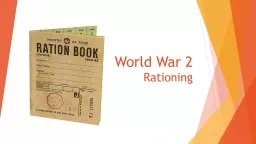PPT-Capital Rationing Mark Fielding-Pritchard
Author : alexa-scheidler | Published Date : 2018-03-15
mefieldingcom 1 The Meaning P lacing restrictions on the amount of new investments or projects undertaken by a company This is accomplished by imposing a higher
Presentation Embed Code
Download Presentation
Download Presentation The PPT/PDF document "Capital Rationing Mark Fielding-Pritchar..." is the property of its rightful owner. Permission is granted to download and print the materials on this website for personal, non-commercial use only, and to display it on your personal computer provided you do not modify the materials and that you retain all copyright notices contained in the materials. By downloading content from our website, you accept the terms of this agreement.
Capital Rationing Mark Fielding-Pritchard: Transcript
Download Rules Of Document
"Capital Rationing Mark Fielding-Pritchard"The content belongs to its owner. You may download and print it for personal use, without modification, and keep all copyright notices. By downloading, you agree to these terms.
Related Documents














